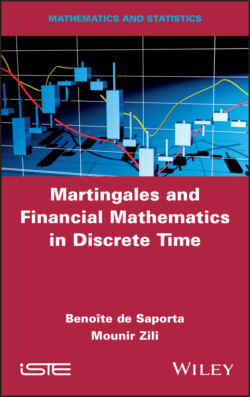Читать книгу Martingales and Financial Mathematics in Discrete Time - Benoîte de Saporta - Страница 14
1.2.4. Random vectors
ОглавлениеWe will now more closely study random variables taking values in ℝd, with d ≥ 2. This concept has already been defined in Definition 1.9. We will now look at the relations between the random vector and its coordinates. When d = 2, we then speak of a random couple.
PROPOSITION 1.9.– Let X be a real random vector on the probability space (Ω, , ℙ), taking values in ℝd. Then,
is such that for any i ∈ {1, ..., d}, Xi is a real random variable.
DEFINITION 1.15.– A random vector is said to be discrete if each of its components, Xi, is a discrete random variable.
DEFINITION 1.16.– Let be a discrete random couple such that
The conjoint distribution (or joint distribution or, simply, the distribution) of X is given by the family
The marginal distributions of X are the distributions of X1 and X2. These distributions may be derived from the conjoint distribution of X through:
and
The concept of joint distributions and marginal distributions can naturally be extended to vectors with dimension larger than 2.
EXAMPLE 1.21.– A coin is tossed 3 times, and the result is noted. The universe of possible outcomes is Ω = {T, H}3. Let X denote the total number of tails obtained and Y denote the number of tails obtained at the first toss. Then,
The couple (X, Y) is, therefore, a random vector (referred to here as a “random couple”), with joint distribution defined by
for any (i, j) X(Ω) × Y (Ω), which makes it possible to derive the distributions of X and Y (called the marginal distributions of the couple (X, Y )):
Distribution of X:
Distribution of Y :
